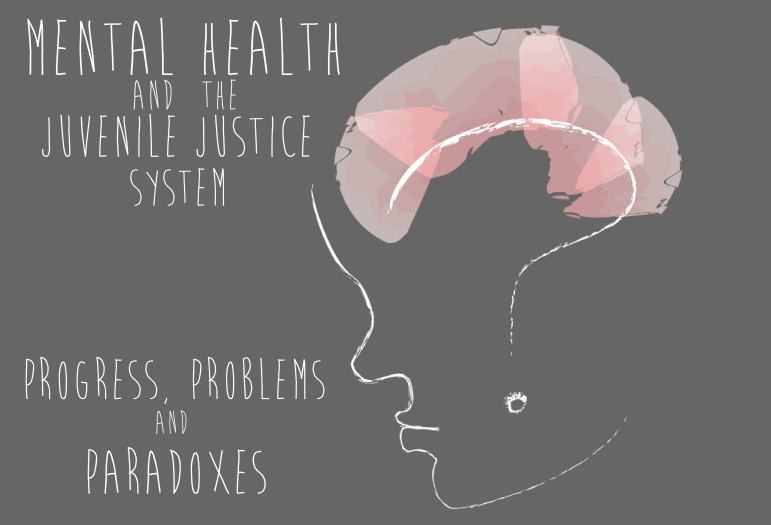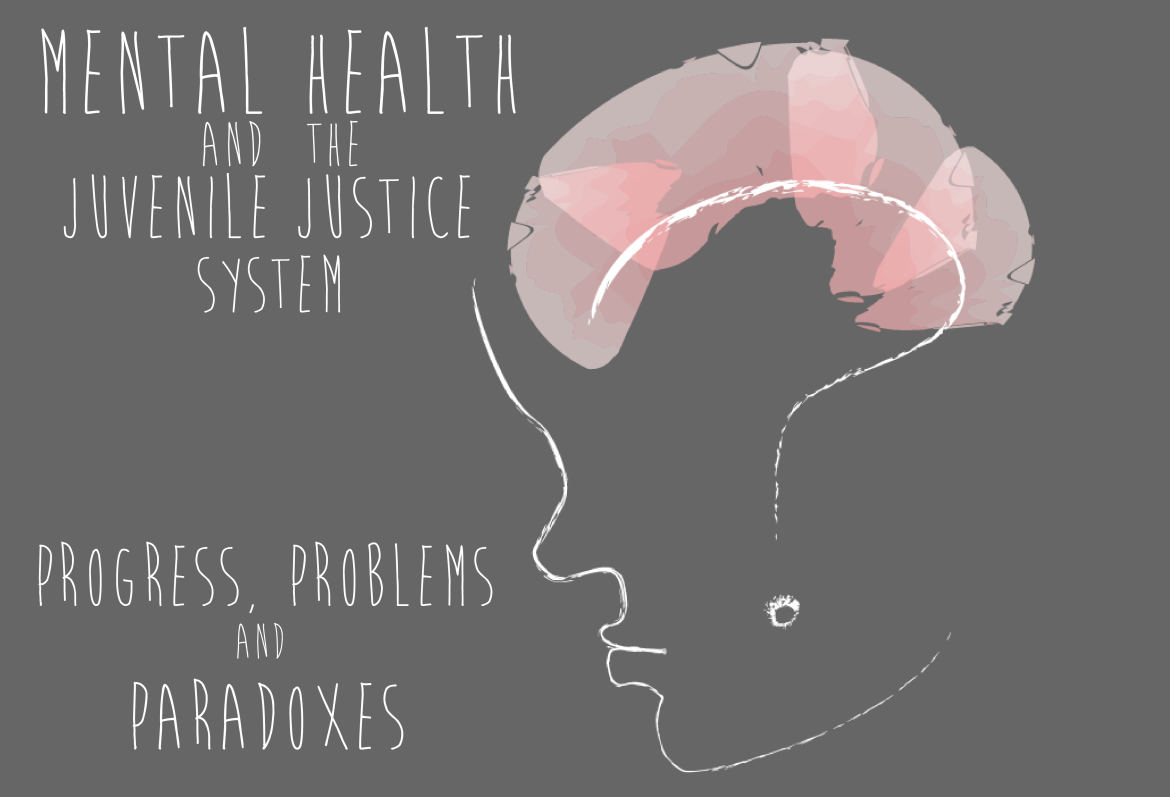
Katy McCarthy / JJIE
Georgia leaders are embracing reform in juvenile justice, but serious gaps and significant roadblocks still prevent many emotionally-troubled youth from receiving the best and most cost-effective care
Like a lot of young people caught up in our nation’s juvenile justice systems, Termaine D. and Elijah C. (not their real names) suffer with serious mental health problems. And like a lot of emotionally-troubled juvenile justice kids, for a long time no one in the juvenile courts (nor anyone else) offered them what mountains of evidence show are the best and most cost-effective kinds of treatment.
Fortunately, that changed last year.
Termaine, now 18, who suffers with bipolar disorder and has been under psychiatric care on-and-off since he was 10, got arrested in the fall of 2011 for assaulting a fellow student at school. Quickly, he was locked up for the sixth time in his young life inside the Gwinnett Regional Youth Detention Center in Lawrenceville, Ga.
On each of the previous occasions, Termaine was held for a few days or weeks, referred to a psychiatrist, and then released on probation. This time, instead of continuing the revolving door cycle, authorities placed Termaine into a program overseen by Youth Villages, a Tennessee-based agency that provides services for troubled young people in 11 states and the District of Columbia. Termaine spent four months in a residential care facility at Youth Villages’ campus in Douglasville, west of Atlanta. Then he was sent home to begin a program of innovative and intensive family-focused therapy.
Check out our Juvenile Justice Resource Hub for even more information about mental health and substance use disorders, including:
Be sure to check back often for updates.
Like Termaine, Elijah, 18, was diagnosed at an early age with serious mental health conditions – in his case, Attention Deficit Hyperactivity Disorder (ADHD) and bipolar. According to his father, Elijah has been taking medications since first grade. He has been arrested and detained several times, and has spent time at the Rome Regional Detention Center near his home in Northwest Georgia, two state-funded residential treatment facilities, and a county jail.
Then last November, Elijah’s probation officer assigned him a second stint in a rigorous “wraparound” program operated by the Lookout Mountain Care Management Entity in Fort Oglethorpe, Ga.

Youth Villages
Kids working with a horse in the equine program at Youth Villages.
Termaine and Elijah have each stayed out of trouble and made significant progress since enrolling in their respective treatment programs. Both programs work with young people in their own homes, rather than placing them in institutions, and both concentrate on resolving family problems and other underlying issues that trigger young people’s problem behaviors.
The two boys’ stories, which are detailed in a sidebar article, help illustrate the potential for home-based treatment methods to turn around the lives of troubled youth while simultaneously reducing crime and saving taxpayers money.
In Georgia, consensus for change has developed among leaders in both parties, in the courts, and across the state government. Carol Hunstein, the chief justice of Georgia’s Supreme Court, who has emerged as one of the state’s leading advocates for reforming juvenile justice, addressed these issues in a speech this February.
“What does a judge do with a chronic runaway girl who comes before him with untreated mental health problems and a history of being sexually exploited while living on the streets?” Hunstein asked. “What does a judge do with the boy who repeatedly is charged with shoplifting but whose family is seriously dysfunctional? Most juvenile judges say they do not want to send these children to locked facilities, but with no community resources, and fearing for the children’s safety, they feel they have no alternative.”
This spring, the state Legislature overwhelmingly approved landmark juvenile justice reform legislation aimed at reducing over reliance on incarceration for low-risk youth, particularly those with mental health issues. However, a close look at Georgia’s budgets for juvenile justice and interviews with key leaders and service providers reveal that – even after the new law’s passage – serious imbalances continue.
Less than 2 percent of the Georgia Department of Juvenile Justice’s $300 million annual budget funds the kind of intensive, evidence-based at-home care for youthful offenders supported by research. Moreover, significant barriers to the widespread adoption of effective programming remain unaddressed in the state, and some model programs now operating in Georgia – including those serving both Termaine and Elijah – are being eliminated in 2014.
A New Consensus for Reform In Georgia
Known as “House Bill 242,” the new juvenile justice law was widely hailed as a fundamental step toward reform. “We worked hard, and we found ways to keep low-risk offenders out of detention centers and save taxpayer dollars, nearly $85 million over five years, while also eliminating the need for two new facilities,” said Georgia’s governor, Nathan Deal. “We did all this while not only maintaining but improving public safety.”
The foundation for these reforms was detailed in two recent reports – a 2011 “Best Practices” study commissioned by the Georgia Department of Juvenile Justice and the Governor’s Office of Children and Families, and a December 2012 study from the Special Council on Criminal Justice Reform, an influential blue-ribbon panel convened by Deal, a former juvenile court judge.
Both studies highlighted the state’s heavy overreliance on secure custody, particularly for low-risk youth. For instance, one quarter of the nearly 2,000 youth held in residential facilities by DJJ in 2011 were not felony offenders, and even many youth held for felonies were rated as low-risk. Overall, nearly as many youth confined in prisons known as Youth Development Campuses (YDCs) from 2005 to 2010 were rated as “low-risk” (30 percent) as high risk (32 percent). Meanwhile, 60 percent of incarcerated young people were receiving treatment for serious mental health disorders.
It costs the state $91,000 per year to confine young people in a YDC, and $88,000 in a short-term detention facility (called Regional Youth Development Centers or RYDCs). Yet nearly two-thirds released from the YDCs were convicted of new offenses within three years. “These rates of recidivism are unacceptable,” the Special Council report argued, “especially given the high costs to taxpayers.”
Meanwhile, the studies found, Georgia was lagging behind many states in adopting evidence-based treatment methods that scientific evaluations have shown cost less and produce better results. A national study released in December 2012 ranked Georgia eighth from the bottom in the use of evidence-based family treatment programs among the 35 states for which data were available. However, only a handful of states have invested heavily in these new treatment models. (For more about other states’ progress in adopting evidence-based treatment models, tune in for tomorrow's coverage)
Enacted with a near-unanimous support in the state legislature, Georgia’s new juvenile justice law prohibits juvenile courts from committing youth to state custody for status offenses like running away from home and for misdemeanor offenses except when committed by chronic offenders with at least one prior felony conviction. The reforms also allow DJJ to reduce lengths of stay for youth guilty of several designated felonies that were previously subject to rigid sentencing rules.
To give juvenile court judges useful information, the new law requires that all youth entering the juvenile court system receive a standardized risk and needs assessment. And the reform law creates a new $6 million-per-year grant program providing funding for counties to expand access to evidence-based community programs – precisely the type serving Termaine and Elijah – provided the counties reduce the number of youth they commit to state custody.
Two Types of Treatment

Youth Villages.
A chess tournament at Youth Villages.
In Georgia (and nationwide), two modes of at-home treatment show significant promise for delinquent and emotionally disturbed youth. First is intensive family therapy delivered by carefully trained and closely supervised therapists, such as Termaine received. Second is “High Fidelity Wraparound” care, like Elijah received from Lookout Mountain, which mobilizes a team of caring adults in each child’s life and connects youth to a menu of available treatment services and youth development activities.
Currently, DJJ contracts with a pair of agencies to provide intensive at-home therapy services for youth committed to state custody. One is Community Solutions, Inc., an Atlanta-based organization offering Multisystemic Therapy (or MST), an elaborate, highly calibrated treatment modality designed by scholars at the University of South Carolina in the 1980s.
Over the past 30 years, MST has been evaluated in 32 outcome studies, including 22 random trials, nearly all of which have found it more effective than alternative services in reducing subsequent arrests and out-of-home placements for youth with serious offending histories and/or serious behavioral disorders. According to MST Services, Inc., a nonprofit agency established by MST’s originators to support effective dissemination of the model, these studies find that MST lowers re-arrest rates by 39 percent on average, and reduces out-of-home placements by 54 percent when compared to other treatment, punishment and supervision alternatives.
With funding from DJJ, Community Solutions began running MST programs in 2002, working with delinquent youth referred by local juvenile courts. Two years ago, DJJ retargeted the program and required Community Solutions to begin serving youth committed to state custody rather than youth referred by the counties. The current contract, which totals $2.2 million per year, funds 100 MST slots in 14 of the state’s 159 counties – enough to serve about 350 youth per year.
Community Solutions reports that through the end of 2011 it had served 3,265 Georgia youth in its MST programs. The agency says that 88 percent of these young people were living at home at the time they were discharged from the program, and 88 percent were enrolled in school. Just 20 percent of these youth were re-arrested during the course of treatment, which typically lasts three to five months.
Youth Villages is DJJ’s other provider of intensive at-home treatment, and its “Intercept” program shares many commonalities with MST. Both programs offer intensive and highly regimented family therapy treatment delivered by carefully trained and closely supervised therapists. Youth Villages operates MST programs in several states.
In Georgia, Youth Villages provides at-home care to 40 youth at any one time, plus another eight youth at the agency’s residential campus. Residential care is often used as a first step to calm a youth down before starting home-based care, or to provide a respite if problems arise or the parent or caregiver needs a break.
The Intercept program is reserved for youth under Department of Juvenile Justice supervision whose behavior is in crisis and who are at imminent risk for placement into (or return to) residential custody, reported program director Kate Cantrell. As of September 2012, two-thirds of youth in Youth Villages’ Georgia program had multiple presenting issues such as behavioral disorders, abuse or neglect and substance abuse. Yet Youth Villages reports that 72 percent of youth participants were living at home the day they were discharged from Youth Villages' care, and 64 percent were still living safely at home six months later.
“We feel strongly that our program is able to achieve those types of long-term results because of the work we do with families,” said Cantrell. “We operate from a very structured, analytical model that allows us to get the results we get.”
A Second Promising Approach

Youth Villages
Kids and their teacher-counselors fishing at the lake at Youth Villages.
Wraparound does not revolve around a highly structured therapy regimen. Instead, wraparound programs assemble a team of supporting adults in the troubled young person’s life – including parents or guardians, other relatives, teachers, neighbors, coaches and clergy. This team is empowered to choose from an array of Medicaid-funded services suited to the young person’s needs and goals – anything from anger management to psychiatric care, tutoring to karate.
Designed to work with disturbed youngsters involved in multiple human service systems – including child welfare, mental health and developmental disabilities and special education, as well as juvenile justice – wraparound programs aim to ensure holistic care for young people in the their own homes.
Rigorous versions of this model, known as “High Fidelity Wraparound,” have achieved impressive results in terms of controlling mental health symptoms, improving behavior and reducing delinquency, and they cost only a fraction as much as placements into psychiatric residential treatment facilities or youth correctional institutions. (Check back tomorrow for a JJIE article summarizing some of the nation’s most successful wraparound replication efforts.)
Recently, Georgia was one of nine states to participate in a federal demonstration project to test the impact of wraparound care as an alternative to placement in residential treatment for troubled youth, or as a step down from residential treatment. A national evaluation published in December 2012 found that youth receiving wraparound care made at least as much progress in behavioral health as youth remaining in residential treatment, yet wraparound’s total cost was one-third as high.
In Georgia, wraparound programs are primarily overseen by the Department of Behavioral Health and Developmental Disabilities. The state’s main wraparound program, launched in 2009 and delivered by four private agencies, has capacity to serve 480 young people with severe behavioral health needs and high risk for placement into psychiatric facilities.
An independent evaluation of DBHDD’s wraparound programs, published in July 2012 by MStar Research, found that that 429 youth of the 1,043 youth (41 percent) who enrolled in wraparound in the previous year had been adjudicated in the delinquency courts. Of these court-involved youth, just 22 percent re-offended within one year – well below the statewide recidivism rate of 34 percent for all adjudicated youth. Nearly half of youth participating in wraparound (44 percent) showed statistically significant improvement in behavioral functioning, versus just 11 percent whose behavior deteriorated. MStar estimated that wraparound reduced annual Medicaid expenses by $44,000 for each young person enrolled, plus an additional savings of $3,180 annually per youth due to lower costs for juvenile confinement.
The DBHDD wraparound programs are open to youth referred from DJJ. However, in recent years, DJJ has also been funding a handful of additional slots in the wraparound program for youth in the northwest corner of the state who are committed to state custody, but whose needs are not quite as severe. This program funded Elijah’s second dose of wraparound care which, unlike an earlier stint in Georgia’s DBHDD-funded wraparound program that proved unsuccessful, has enabled Elijah to stabilize his behavior and steer clear of further delinquency charges. (Again, click here to read Elijah’s story.)
In Georgia, Everyone Agrees… Except the Budget
Based on the encouraging statistical results, nationally and in Georgia, as well as encouraging anecdotal examples like those of Termaine and Elijah, Georgia’s new reform law aims to de-emphasize confinement and expand evidence-based community treatment.
According to Judge Hunstein, who served on the special commission that framed the juvenile justice reform package, careful study of Georgia’s juvenile system revealed that “there were communities that did not have any other alternative other than putting a child in juvenile jail,” she said. “Our reliance on incarceration for young people does not reduce their likelihood to reoffend. Indeed, it may do just the opposite, exposing low risk young people to violence and abuse, and putting some on the path to adult criminality.”
State Representative Wendell Willard, a Republican who also served on the special commission, concurs. “We've all seen the heavy expense in not only dollars but also lives lost because of the failure of the state to keep these children in their communities, where they can be best cared for," Willard said.
Yet, despite this seeming consensus, DJJ’s budget remains heavily tilted toward incarceration – and increasingly so. For the fiscal year 2013, which ends on June 30, the department’s $307 million budget included $189 million for short-term detention centers (RYDCs), and youth prisons (YDCs), but only $40 million (13 percent) for community-based services, and roughly three-fourths of that funded residential facilities.
Less than $10 million was devoted to home-based services, and less than half of that amount – under 2 percent of the total – was used to fund intensive at-home treatment through MST, Youth Villages, or high-fidelity wraparound care.
This spring, just as it was voting on the state’s sweeping juvenile justice reform law, the Georgia Legislature amended DJJ’s budget and cut $6 million from DJJ’s community programs budget – primarily to eliminate wilderness programs. Then in May, the Legislature voted to sustain the reduced funding level for community services in the fiscal year starting on July 1 (FY 2014) while increasing spending for state detention centers and youth prisons by $7.5 million.
These budget changes apparently will not reduce DJJ’s modest investments in intensive at-home programming for emotionally disturbed youth in FY 2014. For unspecified “business reasons,” DJJ has eliminated funding for Youth Villages at-home treatment program, and it has also dropped its limited funding for the Lookout Mountain wraparound care program. However, DJJ spokesman Jim Shuler said the department will soon solicit bids to fund additional evidence-based at-home treatment slots to take their place.
Shuler also confirmed that the state will sustain its MST contract with Community Solutions at the FY 2013 funding level. Sedgrid Lewis, Community Solutions’ MST director, said that with additional funds his agency could effectively serve many more of the state’s court-involved youth.
State budget documents suggest that the added funding for secure facilities is intended to resolve a bed shortage currently plaguing the department. The vast majority of YDC beds are filled with designated felony offenders, many of them low risk, serving mandatory sentences in secure custody. And roughly 200 RYDC beds per day are filled with youth committed to the state’s Short-Term Program – a 30-day shock incarceration sentence often imposed on low-level youth offenders, despite poor recidivism results.
Once it goes into effect in January 2014, Georgia’s juvenile reform law will substantially ease both of these pressures: DJJ will have new freedom to shorten or eliminate incarceration stays for many designated felons, and local judges will no longer be permitted to send low-level offenders to state custody. Experts at the Pew Charitable Trusts estimate that the new rules will cut the daily population in DJJ’s secure facilities by 467 over the next five years, and will save the state $85 million.
To date, DJJ has not announced any specific plans to re-invest these savings into evidence-based at-home treatment, or for other community-based programming. Shuler, the DJJ spokesman, explained in an email that it is impossible to forecast future budgets, however “the Department of Juvenile Justice expects to provide increased services across the entire spectrum of evidenced based services in the community as this agency moves to implement the new requirements in the recently enacted Juvenile Justice Reform Act.”
Uncertainty over Future Funding for County-Run Programs
The recently enacted funding cuts to DJJ’s community programming almost exactly offset the most widely heralded provision of Georgia’s juvenile justice reform law – the new grant program to support new evidence-based treatment in counties, which will total $6 million in FY 2014.
Joe Vignati, who is helping design the grant program at the Governor’s Office for Children, acknowledges that the state’s $6 million commitment “doesn’t sound like a lot for a big state like Georgia,” but he argues that “it represents, especially in tough times, a significant investment in juveniles and reforms.” Vignati, formerly a juvenile probation officer, expects that the grant program will expand with time. “We’re moving from bankrolling activities to actually funding outcomes,” he said. “We’re trying to be able to reduce the reliance on deep-end system beds.”
Wendall Willard, the Republican state legislator, expects the grant program will target about 20 counties in FY 2014 that send the highest numbers of youth into state facilities. "We can't do everything we'd like to the first year," said Willard, who chairs the judiciary committee in the Georgia House of Representatives and also sits on the appropriations committee. "I call the legislation and other steps the end of the beginning. This will be a growing program."
Ken Parks, director of the Lookout Mountain Care Management Entity, a wraparound provider, also expects that state funding for home and community-based treatment will grow. Given the high costs and poor outcomes of incarceration, he said, “There just isn’t the money in the state for it not to happen. If there wasn’t that money yesterday, there sure isn’t gonna be that money tomorrow.”
Yet, as Parks concedes, no commitments have been made. “There are any number of side conversations going on where people are saying the dollars will be shifted,” he said, “but the folks who have the authority to make that happen haven’t said that.”
Restricting Wraparound
Linda Henderson-Smith, coordinator of the Department of Behavioral Health’s wraparound programming, reports that the state’s main wraparound program will continue to support 480 treatment slots in 2014. But the state recently had to narrow its eligibility criteria for wraparound services because it had too many needy youth applying for too few slots.
Meanwhile, a federal waiver program that provided especially generous version of wraparound care for the neediest cases – part of the 9-state demonstration project – ended last September. A different federally funded wraparound program began in May, but with far more restrictive entry criteria.
Eric Bruns, a University of Washington psychiatry professor who coordinates the National Wraparound Initiative, said that Georgia deserves credit for mobilizing a statewide infrastructure for wraparound programming and for participating in the federal demonstration project.
“That is rare among states, and they should be commended for it,” Bruns said. “The question for Georgia and other states is, how many kids are they serving? Are they actually diverting kids from deep end placements when they could be served in the community? Have they gone to scale?”
Henderson-Smith concedes that, unlike a handful of states with particularly ambitious wraparound efforts, Georgia has not yet tapped existing funding from juvenile justice, child welfare, children’s mental health, and Medicaid to create an ongoing funding stream that enables the state to divert many more troubled youth away from expensive institutional placements and into wraparound care.
“From a Georgia systems perspective, we are all in the process of looking at how we get those evidence-based practices that we know can be effective for those special populations we serve,” said Henderson-Smith. “We’re trying to catch our system up quickly.”
Unfortunately, Henderson-Smith and her counterparts in the state’s juvenile justice system still have a long distance to travel.
“We're in the infant stages," said Appellate Court Judge Michael Boggs, who co-chaired the Special Council on Criminal Justice Reform crime that formulated the state’s new juvenile justice law. "We know that other states that have implemented these strategies have seen [good] results. We didn't have to reinvent the wheel."
On the other hand, Boggs adds. "It's too early to tell whether what we have just passed in the General Assembly, most of which hasn't taken place yet, whether what we've enacted will effectuate the changes we expect.”
JJIE’s coverage continues tomorrow with a look at how other states are faring in their efforts to spread effective at-home treatment models. And be sure to read our story about two Georgia youth who recently participated in these programs.
Editor's Note: Dick Mendel, one of the co-authors of this article, has written frequently in recent years for the Annie E. Casey Foundation, which is currently working as an unpaid consultant in Georgia to help state and county officials implement the state's new juvenile justice reform law. The Casey Foundation played no role in suggesting, formulating, or framing JJIE's coverage of this issue.
This series is part of an ongoing collaboration with the Center for Public Integrity.



Why was i never told of this?!! My son is a lowe level, offender felony , but low level, one time offender who got five years. The da nor defender ever, even the judge nvere ever told us of any of these options existing. He has 18 months left on a five year sentence with , 20 years probation. We wanted treatment. TREATMENT>!!! we couldn’t afford a private lawyer and private treatment, we even know people who were and are involved in inner harbor. WHY?!!!! why were we railroaded? We were never offered any altwernative than YDC> or jail. Throw the book at them, that was our counties’ motto i guess. This is a grave injustice, maybe even a mistrial type situation…I ASKED!!!!
sorry for the misspelled words in the previous post but i am quite sick right now!! i feel very ill.!!!